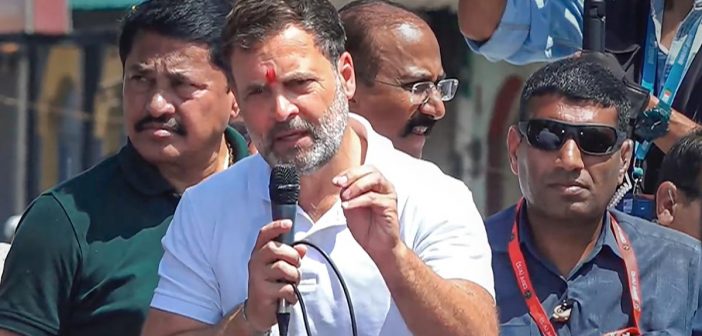The declaration by Congress leader, Rahul Gandhi to deposit Rs.100,000 in the bank account of every woman in India is delusionary. The promise is based on false assumptions and can never be realized.
Here’re reason’s why the Congress leader’s promise is unrealistic and also anti-national since it can adversely affect the Indian economy.
The idea of empowering women through a direct cash transfer of Rs.100,000 (approximately $1,230) to each woman in India holds a certain allure. However, a closer look reveals significant economic and logistical challenges that make this proposal unrealistic and potentially detrimental to the national economy.
The Sheer Scale of the Challenge:
India’s population exceeds 1.4 billion, with an estimated 618 million females [Worldometers]. Distributing Rs.100,000 to each woman translates to a staggering Rs.618 trillion (approximately $7.6 quadrillion). This figure dwarfs India’s current GDP of roughly Rs.267 trillion ($3.3 trillion) [World Bank].
Funding the Initiative:
There are simply no realistic options to fund such a massive undertaking. Here’s a breakdown of potential sources:
- Printing Money: Printing massive amounts of currency to finance the program would lead to hyperinflation, eroding the purchasing power of the existing currency and plunging the economy into chaos.
- Taxation: Raising taxes to this level would cripple businesses and individuals, hindering economic growth and potentially leading to a recession.
- Borrowing: Borrowing such a colossal sum would saddle future generations with an unbearable debt burden.
Logistical Hurdles:
Identifying and verifying eligible women across a vast and diverse country like India would be a monumental task. Issues like fake IDs, duplicate claims, and exclusion of marginalized groups pose significant challenges. Additionally, ensuring the secure and efficient distribution of such a large sum across rural and remote areas would be incredibly complex and expensive.
Impact on the Economy:
The immediate impact on the economy would be inflationary. A sudden influx of such a large amount of cash would likely outpace the available supply of goods and services, driving up prices. This would disproportionately affect those on fixed incomes, especially the poor.
Sustainability and Long-Term Impact:
A one-time cash transfer wouldn’t address the root causes of gender inequality. Sustainable change requires investments in education, skill development, and healthcare for women. These interventions empower women to participate in the workforce, leading to long-term economic independence and societal progress.
Lessons from Similar Programs:
While cash transfers can be a valuable tool in poverty alleviation, large-scale programs with limited targeting have shown mixed results. A 2010 study by the World Bank on Brazil’s Bolsa Familia program found positive impacts on child health and education, but limited evidence of long-term economic empowerment for women [World Bank].
Alternative Solutions with Lasting Impact:
- Financial Inclusion: Expanding access to bank accounts, microloans, and financial literacy programs can empower women to manage their finances and build long-term wealth.
- Education and Skill Development: Investing in education for girls increases their lifetime earning potential and participation in the workforce. Additionally, skill development programs can equip women with job-specific skills, opening doors to better employment opportunities.
- Entrepreneurship Promotion: Providing training, mentorship, and access to capital can help women launch their own businesses, fostering economic independence and job creation.
- Addressing Gender Bias: Tackling discriminatory social norms and legal barriers that hinder women’s economic participation is crucial for long-term progress.
Conclusion:
The proposal for a Rs.100,000 cash transfer to all women in India, while well-intentioned, is economically unfeasible and unsustainable. The focus should shift towards targeted interventions that empower women through education, skill development, and financial inclusion. These strategies hold the potential to create lasting change and unlock the full economic potential of India’s women. By investing in their future, we invest in the future of the entire nation.





